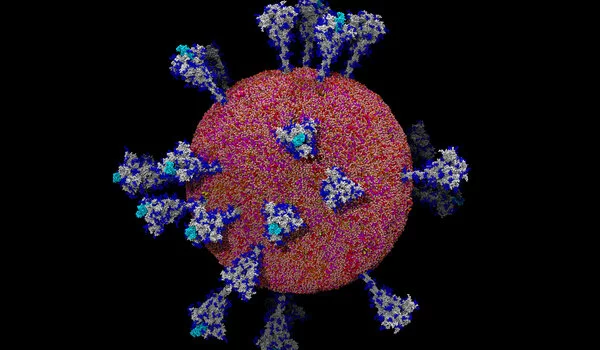The first computational reconstruction of a virus in its biological entirety is still a work in progress. Currently, researchers have used computational methods to model various aspects of viruses, such as their structure, dynamics, and interactions with host cells.
One of the most famous computational reconstructions of a virus is that of the virus that causes AIDS, known as HIV. Researchers have used computational methods to study the structure and dynamics of the virus, as well as its interactions with host cells, to better understand its life cycle and to develop new treatments for AIDS.
A computer reconstruction of a virus, including its entire native genome, has been created by a researcher. Despite the fact that other researchers have created similar reconstructions, this is thought to be the first to replicate the exact chemical and 3D structure of a ‘live’ virus.
An Aston University researcher has created the world’s first computer reconstruction of a virus, complete with its native genome. Although similar reconstructions have been created by other researchers, this is the first to replicate the exact chemical and 3D structure of a ‘live’ virus. The discovery could pave the way for research into antibiotic alternatives, reducing the threat of anti-bacterial resistance.
No one had previously been able to create a native genome model of an entire virus at such a detailed (atomistic) level. It is critical to be able to clearly study the genome within a virus. It was impossible to know how a bacteriophage infects a bacterium without the genome.
Dr. Nerukh
The research Reconstruction and validation of entire virus model with complete genome from mixed resolution cryo-EM density by Dr Dmitry Nerukh, from the Department of Mathematics in the College of Engineering and Physical Sciences at Aston University is published in the journal Faraday Discussions. The research was conducted using existing data of virus structures measured via cryo-Electron Microscopy (cryo-EM), and computational modelling which took almost three years despite using supercomputers in the UK and Japan.
The breakthrough will open the way for biologists to investigate biological processes which can’t currently be fully examined because the genome is missing in the virus model. This includes finding out how a bacteriophage, which is a type of virus that infects bacteria, kills a specific disease-causing bacterium.

At the moment it is not known how this happens, but this new method of creating more accurate models will open up further research into using bacteriophage to kill specific life-threatening bacteria. This could lead to more targeted treatment of illnesses which are currently treated by antibiotics, and therefore help to tackle the increasing threat to humans of antibiotic resistance.
Dr. Nerukh stated: “No one had previously been able to create a native genome model of an entire virus at such a detailed (atomistic) level. It is critical to be able to clearly study the genome within a virus. It was impossible to know how a bacteriophage infects a bacterium without the genome. This advancement will now allow virologists to answer questions that they were previously unable to answer. This could lead to targeted treatments to kill bacteria that are harmful to humans, as well as a reduction in the global problem of antibiotic-resistant bacteria, which is becoming increasingly serious over time.”
The team’s approach to the modelling has many other potential applications. One of these is creating computational reconstructions to assist cryo-Electron Microscopy — a technique used to examine life-forms cooled to an extreme temperature.
It is important to note that while these computational reconstructions can provide valuable information about viruses, they are not yet a substitute for laboratory experiments and direct observation of viruses in their natural state. However, they are a valuable tool for advancing our understanding of viruses and for developing new treatments and preventions.





